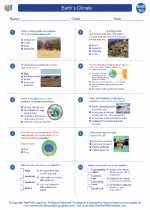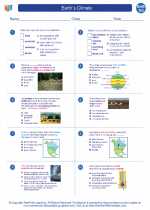Ionizing Radiation
Ionizing radiation is a type of radiation that has enough energy to remove tightly bound electrons from atoms, creating ions. This process can cause damage to living tissues and genetic material. There are three main types of ionizing radiation: alpha particles, beta particles, and gamma rays.
Types of Ionizing Radiation
- Alpha Particles: Alpha particles are made up of two protons and two neutrons and have a positive charge. They have low penetration and can be stopped by a sheet of paper or even human skin.
- Beta Particles: Beta particles are high-energy, high-speed electrons or positrons emitted by certain types of radioactive nuclei. They can penetrate through the skin and can be stopped by a layer of clothing or a few millimeters of a substance such as aluminum.
- Gamma Rays: Gamma rays are high-energy electromagnetic radiation emitted from the nucleus of a radioactive atom. They are the most penetrating of the ionizing radiations and require several centimeters of lead or several meters of concrete to effectively shield against them.
Effects of Ionizing Radiation
Ionizing radiation can cause damage to living cells by breaking chemical bonds in molecules. This can lead to tissue damage, radiation sickness, cancer, and genetic mutations. The severity of the effects depends on the dose of radiation received and the duration of exposure.
Uses of Ionizing Radiation
Despite its potential for harm, ionizing radiation has several important uses, including medical imaging (X-rays and CT scans), cancer treatment (radiation therapy), sterilization of medical equipment, and energy production in nuclear power plants.
Protecting Against Ionizing Radiation
It's important to take precautions to minimize exposure to ionizing radiation. This can include using shielding materials, maintaining safe distances from radiation sources, and limiting the time of exposure. Understanding the principles of radiation safety and following established protocols is crucial for workers in industries where ionizing radiation is present.
Study Guide
- Define ionizing radiation and explain how it differs from non-ionizing radiation.
- List and describe the three main types of ionizing radiation.
- Discuss the effects of ionizing radiation on living tissues and genetic material.
- Explain the uses of ionizing radiation in various fields, such as medicine and energy production.
- Describe the measures that can be taken to protect against ionizing radiation exposure.
◂Earth Science Worksheets and Study Guides High School. Earth`s Climate

 Worksheet/Answer key
Worksheet/Answer key
 Worksheet/Answer key
Worksheet/Answer key
 Vocabulary/Answer key
Vocabulary/Answer key
 Vocabulary/Answer key
Vocabulary/Answer key
 Vocabulary/Answer key
Vocabulary/Answer key
